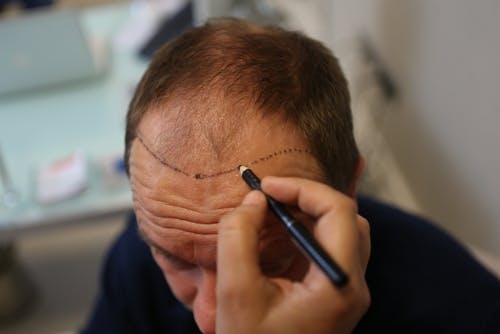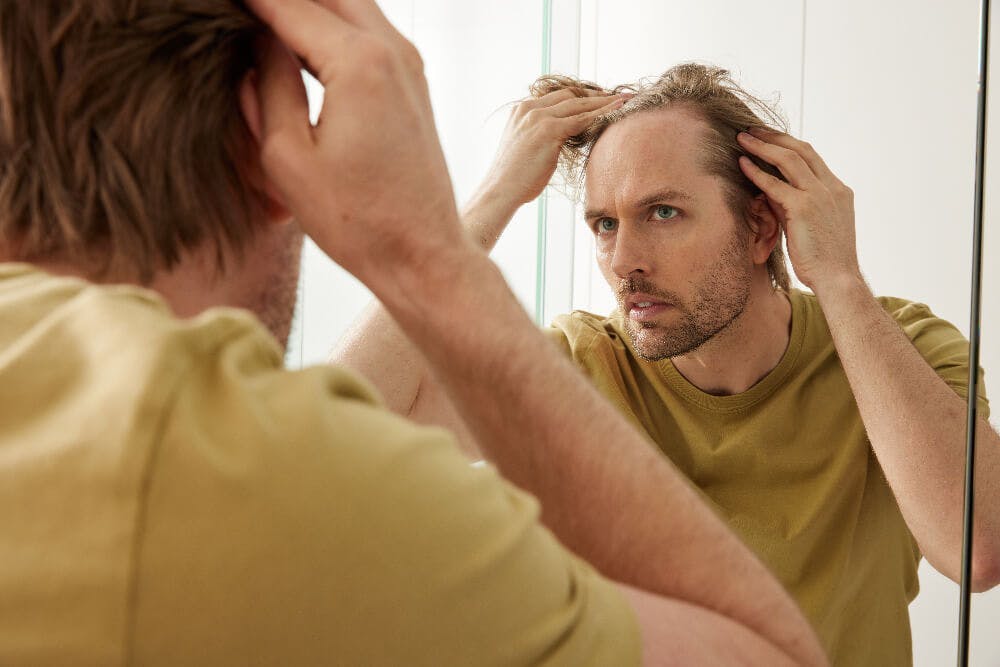How long does an FUE hair transplant last?
A follicular unit extraction (FUE) or follicular unit transplant (FUT) procedure is a hair transplant technique that can give you your hair back in places where they’ve thinned or fallen out. [1] They’re not limited to the top of your head either. There are, however, key differences between the two procedures.[2]
FUE is considered the less invasive hair follicle transplant of the two procedures, as it only inserts hair follicles and glands from a different part of the body – typically from the nape or baseline of the scalp – and lets these follicles grow into their new placement.
By extracting hair follicles and placing them in a different location, the FUE procedure encourages the replication of natural hair growths. If the process is successful, the hair follicles will continue to grow back on their own.
Meanwhile, an FUT is more involved compared to an FUE. In very general terms, an FUT procedure will take a graft of skin in which hair is already growing, trim it to suit the area where new hair is desired and transplant it to allow the follicle-rich hair graft to grow into the new placement.
The risks of a scar made from the donor site with an FUT procedure may be lesser than that of an FUE. However, an FUE may offer more immediate results compared to an FUT due to its shorter recovery period.[3][4] Both FUEs and FUTs require a delicate and practised hand, and so they’re best performed by medically trained professionals to achieve one’s desired outcomes.[5] Before deciding on either hair transplant procedure, you should always talk to your doctor about your options. This will help you get the best results.
How long do hair transplants usually last?
In theory, while the transplanted hair will be permanent, loss of the native surrounding hair may still progress[1]. Some patients may have to undergo more than one hair transplant surgery in their lifetime. Maintenance medical treatments may also be needed even after a successful hair transplant to maintain the transplanted hairs and prevent the thinning of other hairs on the scalp as well.
No hair treatment can completely prevent hair thinning and balding that is caused by genetic factors, but early treatment may help you avoid losing more hair and improve the health of the hair on your scalp.[2]
When you’re ready to discuss your hair-related concerns with a doctor, you can book an online consultation with a Mosh doctor at your convenience. You may reach your doctor via text, call, or video chat to ask them about anything you may be curious about, such as a stem cell hair transplant in Sydney or the possible factors that affect hair growth.
You may also opt to fill out our online questionnaire so your doctor can get a quick summary of what you’re dealing with. A Mosh doctor will then reach out to you for a confidential conversation about your concerns and walk you through the available treatment options that are suitable for you.
What are some of the things to consider before getting a hair transplant?
An effective and successful hair transplant can last a few years at best before any signs of thinning or falling out appear.[6] In many instances, they can be permanent or require only minimal upkeep to maintain a healthy head of hair. That being said, there are several points to consider before getting hair transplant surgery.
Hair restoration procedures are technically considered outpatient surgeries, and you must be prepared to follow your doctor’s provided hair transplant care routine diligently to minimise any complications. Your hair transplant downtime could last anywhere from two weeks[7] to six months[8], depending on the procedure.
Aftercare is a very important part of the process, and it can affect how well your hair transplant works in the long run. As such, if your doctor advises you to follow an aftercare regimen, it’s best to follow their instructions, especially to avoid scarring, pain, and possible infections.[9] This is especially important if you plan on going on a holiday; exposure to extreme heat, ocean water, chlorinated water, and other contaminants could hinder the healing process.[10]
Another point to consider is that the transplanted hair growth may not be as thick as you might expect. A hair transplant procedure takes hair from one part of the body to another – for example, if the hair follicles are taken from the back of your arm, they may not grow as thickly as the hair on your head.[11] It’s best to discuss with your doctor where your follicle grafts will be taken from so that the new hair growth will be better matched to the already-present hair.
What is the average cost of a hair transplant in Australia?
The average cost of a hair transplant session is anywhere from $5,000 to as much as $30,000[12] – a pretty steep cost for a full head of hair, as well as a serious commitment, as procedures could take up several hours[13] for the procedure alone, recovery time notwithstanding.
Invasive procedures like a hair transplant may require you to take considerable time off to recuperate to properly attend to your aftercare. When calculating the cost of a hair transplant, consider also the cost of its aftercare.
Consider non-invasive methods first. Examples of non-invasive methods are clinically backed hair loss medications. Such medications can help alleviate the symptoms of hair loss or encourage hair growth to at least keep the need for a hair transplant at a minimum.
Mosh features subscription plans for hair medications that supplement or otherwise nourish the necessary nutrients vital to hair growth. Depending on whether you’re seeking to address a receding hairline, thinning hair, or falling hair, Mosh will work with you to determine an ideal plan for your needs. You can take advantage of a free first-time consultation with our doctors, who will work with you to identify the key points – like lack of nutrients, genetic factors, mental health issues, or hormonal changes – that contribute greatly to your hair concerns.
Hair loss, hair fall, and hair thinning are complex processes influenced by a variety of factors. Our doctors are experienced in providing guided and evidence-based advice on such matters. Consult with your Mosh doctor first before signing on for a hair transplant; you may not need one right this moment.
Men’s health made easy at Mosh
Hair loss isn’t the only health concern we help address at Mosh – we also offer mental health services, skin care programs, and weight loss treatment among our many services. All of our Australian doctors are AHPRA-registered, and our programs and plans are backed by clinically tested data and years of experience with treatment.
From helping you manage symptoms of depression or anxiety with depression, to helping you get your fitness goals back on track with meal replacement shakes, Mosh endeavours to assist you in becoming a healthier version of yourself through personalised clinical treatments. And it’s all online – for your utmost convenience and discretion.
When it comes to getting healthy, take it easy – get Mosh.

